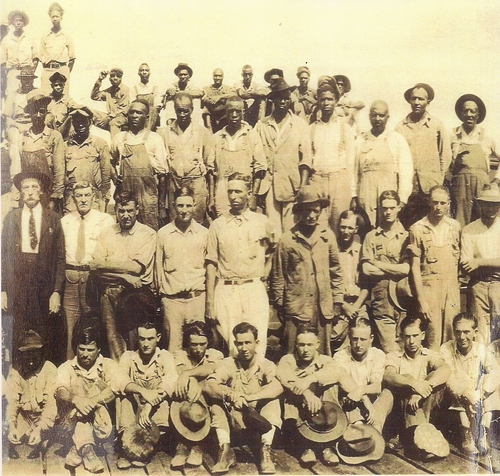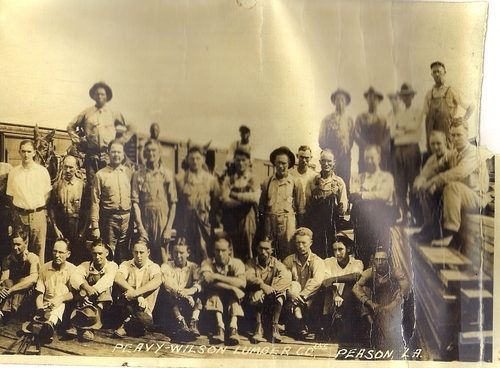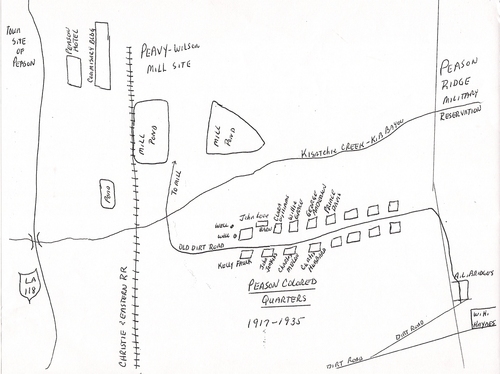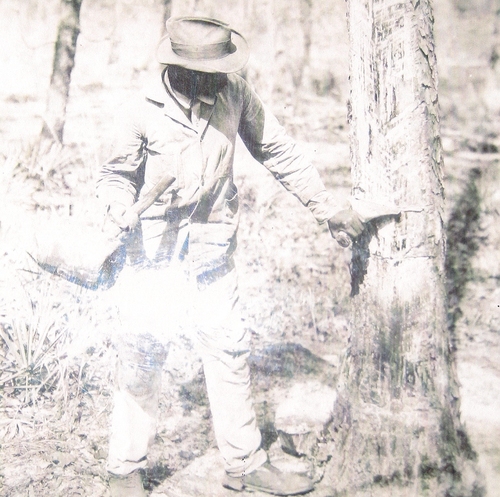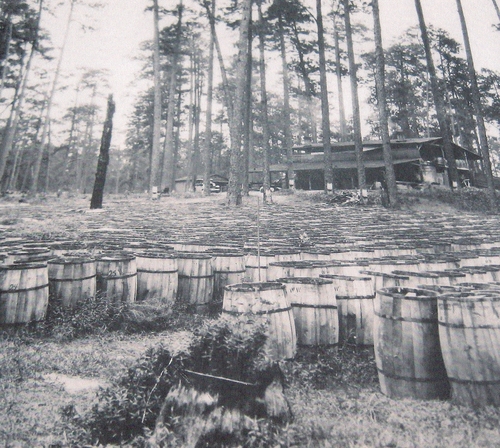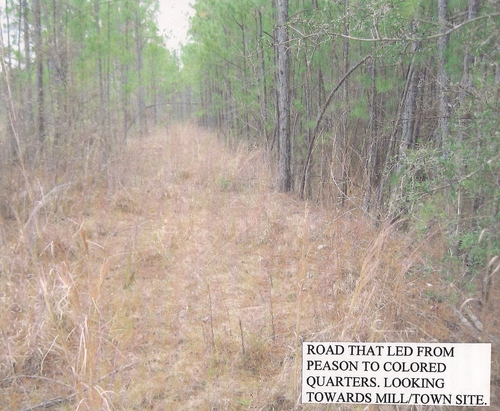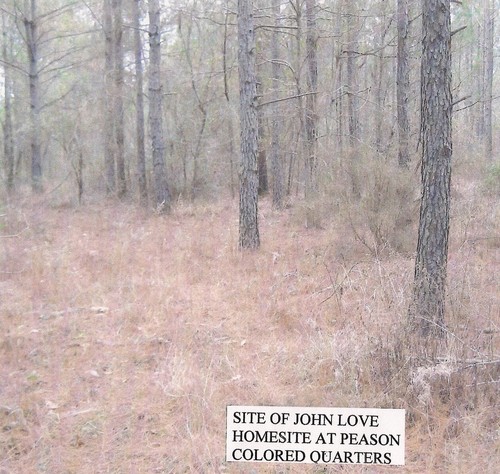.JPG)
By Rickey Robertson
With the building of the sawmill town of Peason, La. workers from throughout the area came to obtain jobs and work in the mill, in the log woods, turpentine camps, and corral sites. Even though they are almost a forgotten part of local, southern, and national history, the black workers performed their duties with pride and hard work. These workers also raised their families as they worked for Peavy-Wilson Lumber Company. Yes, these folks made great accomplishments to our local , state, and national history. The men worked in many various jobs for the company and their wives were either housewives or they worked cleaning house, washing and ironing clothes, some even taught the children and gave them their first educational opportunities since there was no school for the black children, and they also worked many other jobs that would bring in some much needed monies.
As was the normal in the south during this time period of 1917 to 1935, the black workers and families were segregated and lived in what was known as the Peason Quarters. The black families paid a monthly rent of $3.00 per month for their company owned houses. The black workers and their families also traded at the Peavy Wilson Commissary in the mill-town. The first black child born in Peason was the child of Carrie Blinks. The quarters were located away from the main town of Peason and a road led from the mill, by the mill ponds, across Kisatchie Creek and Kib Bayou, on to the quarters. The remains of this old road exist to this very day and I have found the location of the quarters and house sites. I have attempted to locate by name as many of the original Black Families who lived and resided at Peason and have compiled a partial listing of these. The last Black Family at Peason was John and Vina Love. They lived in the first house on the left as you arrived at the quarters. When the mill closed in 1935 all the workers, both white and black, scattered to other mills to find jobs, with some of them traveling to Holipaw, Florida with the Peavy Wilson Company. But Uncle John and Aunt Viney as they were known, stayed on at Peason and bought a small tract of land where they lived. My Grandfather, Ora Robertson and my Grandmother Ettie Bell Robertson, along with Mr. and Mrs. Andrew L. Bridges, were close friends of this dear family. My father, Bud Robertson, always talked of Uncle John and Aunt Viney, and how they would come to their farm and help my grandparents kill hogs, can fruit, make jelly and jam,and harvest the crops. And as neighbors and friends my family would go and help Uncle John and Aunt Viney. And till my Dad died in 2003, he always talked how he and his family loved Uncle John and Aunt Viney. And Andy Bridges, son of Mr. A.L. Bridges, speaks also so favorably of these two older black neighbors. Isn't this the way we are supposed to live as neighbors and friends, no matter what color our skin may be?
Since Peavy Wilson Company had such a large operation, the black men worked in every part of this logging and sawmill operation. Many worked in the log woods as mule skinners, flat heads who cut the large timber with a crosscut saw, in the turpentine camps gathering the rich pine resin, working in the section gangs on the Christie and Eastern Railroad, at the corrals where the log mules, horses, and oxen were kept. And many worked inside the mill doing all types of jobs. They were a very important part of the large work force that comprised Peavy Wilson Company. One thing many people do not know is that during the Great Depression, Mr. Peavy never laid off any of his workers, black or white. He was so skillful in running his operation that no one lost their job due to cuts and downsizing. But sadly, many black workers names are being lost to history. From the 1930 census I have compiled a listing of the names of the black workers from here at Peason. This is not a complete record because those black workers who worked in the skid camps , turpentine camps, and corral sites were not listed because they did not have an actual address at the sawmill town of Peason. These were small buildings built on skids or slides that could be easily moved by a team of horses or mules to the next site. They did not stay in one place long and were always on the move. Many of these black workers names may have never been listed on any census record compiled by the U.S. Government. And sadly there are many buried in unmarked graves scattered across Peason Ridge that there is no record of.
Here is the listing of African Americans I have compiled and please remember the spelling is just as on the census documents:
- John Love | Vina Love
- Paul Love | Annie M. Love
- Clementine Love
- Kelly Faulk Azalie Faulk
- Rahine Faulk
- Clara Williams | Hattie Myres
- Bertha Williams
- John Jenkins | Edna Jenkins
- Ruby Jenkins | Johnnie Jenkins
- Willie L. Jenkins | Hilda M. Jenkins
- Willie Grace | Elcamea Grace
- Ester Grace | Lorenza Grace
- John L. Grace | George L. Grace
- Charles Melon | Hellen Melon
- Samuel Melo
- George Anderson | Lula Anderson
- Curtis Hubbard | Lettie Hubbard
- Freddie Hubbard
- Maggie Lockley | Adella Anderson
- Prince Davis | Mattie Davis
- Mary Davis | Lessie M. Davis
- Walter Davis | Sim Brown
- John Rogers | Vera Rogers
- Johnnie Taylor
- Rosa L. Lang | Harrison Lang
- Winnie Lang
- Bill Hawkins | Carrie Hawkins
- Lillie Ballard | Preston Ballard
- Mary L. Cooper | Margarette Cooper
- Willie Newman
- Edgar Owens | Dora Owens
- Clyde Owens | Eijah Owens
- Eugen Owens
- Will Watley | Annie Watley
- Clarence Watley | William B. Watley
- Elaine D. Watley
- Cap P. Webb | Mellie Webb
- Ernest Webb | Mildred Webb
- Earline Webb
- Mack C. Gasq | Etta Gasq
- Ed E. Jones | Mellie M. Jones
- Nancy Hunter
- Frances White | Chlotile White
- Jack White | H.D. White
- Ethel Johnson | Robert Johnson
- Hattie Gasq | Delia Gasq
- Ida B. Gasq | Mattie B. Gasq
- Octavia Edwards
- Key Lilly
- Willie Paster
- Toem Felton | Melia Felton
- Lester Charles | Carrie Blinks
As more names and information about the African Americans citizens who lived in Peason are located I will be able to update this brief history. Hopefully more information will come to light as these people made an impact on our parish, our state, and our nation and any information can be shared for future generations.
